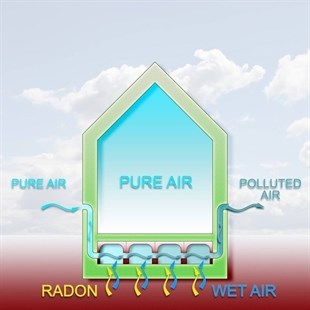
Image Credit: Shutterstock
October 05, 2015 - 6:30 PM
THOMPSON-OKANAGAN - It sounds like something from a thriller sci-fi movie - a colourless, odorless radioactive gas that seeps from the ground, infiltrates buildings and kills people.
In real life, radon gas is a known carcinogen, the second leading cause of lung cancer accounting for 10 per cent of cases and is found in elevated levels through out the B.C. Interior.
The Interior Health Authority will hear from its own director of health protection Roger Parsonage tomorrow, Oct. 6, on measures the health authority is taking to ensure its own buildings are radon-free.
It has distributed 2,300 detectors and spread them throughout 202 different buildings either owned or leased by the health authority and will use the results to determine which buildings are adversely affected and require mitigation.
With the help of a $105,000 grant from Health Canada, it is also hoping to raise awareness amongst private property owners within the health authority of the importance of testing for radon concentrations in their homes.
“Determining whether radon mitigation is required in either a new or existing residential building requires a simple, inexpensive test,” Parsonage says in his report to the health authority board of directors. “Unfortunately, the need to test is not well understood and public awareness is therefore the curent focus of [our] efforts.”
The health authority has so far used the grant money to supply radon test kits to daycares and schools and is working with UBC Okanagan on a marketing approach to radon testing.
Radon gas is created naturally through the decay of uranium contained within rocks and soil. It usually finds its way into houses through cracks in the foundation or holes where pipes enter basements and can easily be reduced through proper ventilation.
While radon levels are considered higher than average throughout the Interior, they are of a particular concern in the Kamloops and Penticton areas where the average main floor concentration can approach 200 Becquerels per cubic metre, the point where Health Canada recommends mitigation within two years.
Kelowna and Vernon also have elevated radon levels of between 50 and 100 Bq/m3 on average, although potentially harmful concentrations of the gas can occur anywhere.
According to Parsonage’s report, provisions of the B.C. Building Code introduced in December, 2014 require new residential buildings in the Interior to rough in space for radon mitigation equipment.
A test kit for radon gas is available through the B.C. Lung Association for $29.99 which includes the cost of lab analysis.
To contact the reporter for this story, email John McDonald at jmcdonald@infonews.ca or call 250-808-0143. To contact the editor, email mjones@infonews.ca or call 250-718-2724
News from © iNFOnews, 2015